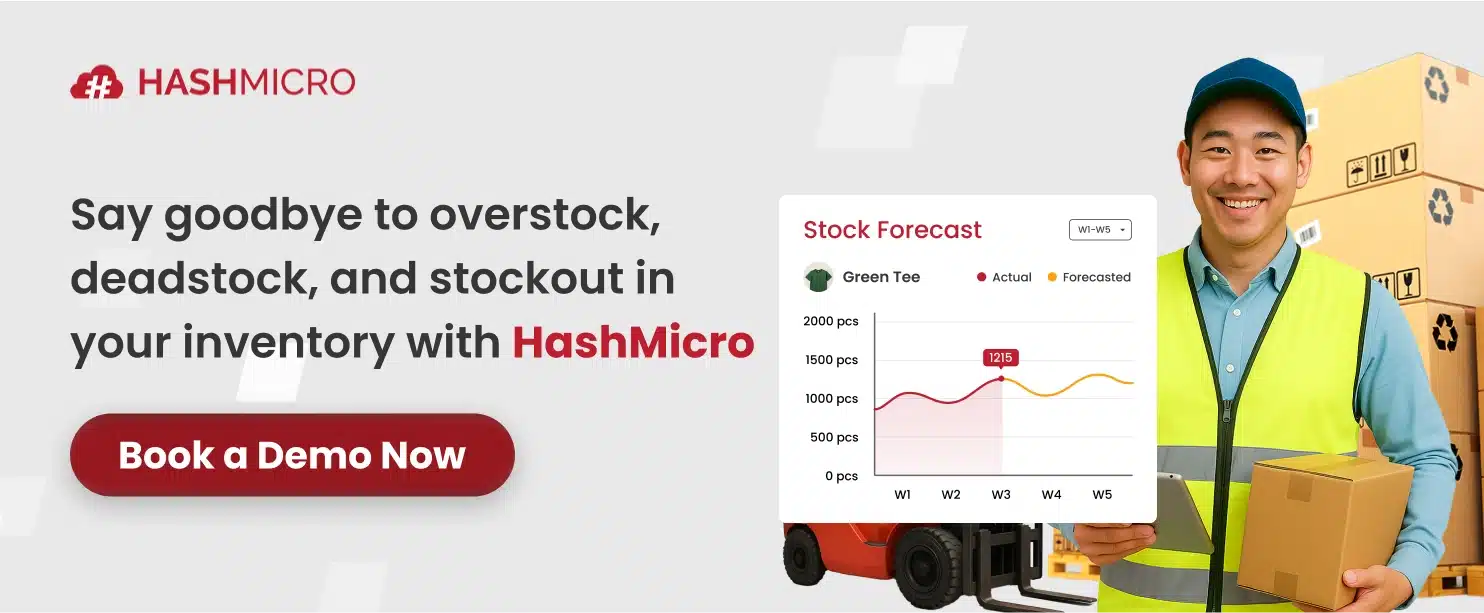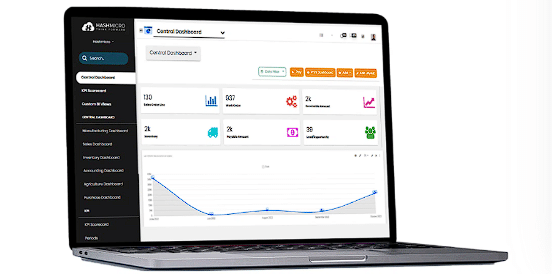What are stockouts, and how can you prevent them? As someone who works in the inventory related industry, you know that stockouts are a nightmare for inventory businesses. In fact, as reported by the Information Technology Research Institute, 65% of companies in the world experience productivity issues due to stock outs.
Stock out itself is a condition where the stock of goods runs out, so the company cannot fulfill the order request from the customer. This can cause losses to the company, such as lost sales, damage to reputation, and additional costs for restock or expedited shipping.
So, why do stock outs happen and impact 65% of companies in the world? What are the strategies that can be done to overcome stock outs so as not to disrupt the company?
In this article, we will discuss what stock outs are, their causes and how to overcome them. So, you can avoid stock outs and become the most successful inventory company in Singapore.

Key Takeaways
|
What is Stockout in Inventory Companies?
Stockout is a condition when a company experiences a shortage of stock for a particular item in inventory, making it unable to fulfill customer demand. Stockouts can happen due to various factors, such as errors in inventory planning and inaccurate forecasting of stock requirements.
In addition, stockouts can also occur due to inefficiencies in the supply chain process, such as late deliveries from suppliers or disruptions in production. This can result in the company not having stock to process into the goods desired by customers. Making a company avoid stockouts isn’t easy, but that doesn’t mean it’s impossible.
Then, how to calculate the number of stockouts for an inventory company? Here is how you can calculate the number of inventory stockouts:
Stockout Rate= Products Not In Stock ÷ Total Number of Products Available
Avoiding stockouts requires proper inventory management strategies, such as the use of early warning systems to detect stock drops, more accurate demand analysis, and good relationships with suppliers to ensure smooth supply. By doing this, companies can minimize the risk of stockouts and maintain customer satisfaction.
What Causes Stockout in Inventory Companies?
Inventory stockouts can be caused by several factors that exist in the inventory company. Here are some of the factors that cause inventory stockouts to happen:
1. Inefficient inventory management
Inefficient inventory management systems are often the root cause of stockouts. The company’s inability to monitor stock quantities in real-time can make the company lose control over the availability of goods in the warehouse.
Furthermore, the lack of implementation of proper technology in inventory management can make it difficult for companies to predict stock requirements accurately. This can lead to a situation where the company runs out of a material to produce an order, making the company unable to fulfill the order on time.
2. Supply chain disruptions
Believe it or not, the supply chain can also be a factor in stockouts. An inefficient or disrupted supply chain is to blame. Not to mention that the suppliers chosen are unreliable. In addition, a lack of effective communication between the company and the supplier can also worsen the situation.
If information about stock requirements is not delivered on time, suppliers will find it difficult to fulfill orders quickly. This will have repercussions for the company, such as running out of essential goods and losing the opportunity to meet customer demand.
3. Mistakes in demand forecasting
Inaccurate demand forecasting is one of the main causes of stockouts. This can happen if a company underestimates the level of demand. Thus, the company cannot have enough stock to meet customer needs. As a result, the company cannot carry out production due to insufficient stock.
In addition, sudden customer demand in large quantities can also lead to stockouts. For example, a sudden spike in demand due to a successful promotion or a change in consumer preferences could leave a company out of stock. Without in-depth data and analysis, companies can easily miss sales opportunities due to stock shortages.
4. Lack of inter-departmental coordination
Lack of coordination between sales, marketing, and logistics departments can also lead to stockouts. If the sales team does not communicate well with the inventory team about increasing demand trends, the logistics team cannot prepare for sufficient stock replenishment.
In addition, marketing decisions that are not properly communicated to the inventory team can lead to problems. For example, launching a major promotion without preparing enough stock could lead to an unanticipated demand surge, causing the company to run out of goods in a short period of time.
How Stockouts can Impact Company Productivity?
We have already discussed how stockouts can occur. So, what impact does a stockout have on a company’s productivity that makes company management so afraid of stockouts?
So, when a stockout occurs, one of the impacts is to damage the company’s reputation in the eyes of customers. How does that happen? It can happen because stockouts give companies the inability to provide the products they need which in turn can reduce customer loyalty.
Another impact of stockouts is disruption to the production flow. When raw materials or semi-finished goods are not available, the production process can come to a halt, causing delays in making customer orders. This not only affects the efficiency of operations but also adds to operational costs due to longer production times.
Stockouts also affect a company’s time and resource management. When the stock runs out, the company has to find alternative suppliers or expedite deliveries to solve the problem. This leads to inefficient resource management, and lowers the company’s productivity.
How to Prevent Stockouts in Companies?
As a business owner, you definitely don’t want stockouts to happen. So, how to prevent stockouts? Here are 10 strategies you can do to avoid stockouts to happen.
1. Conduct regular and periodic stock reviews
One of the ways you can avoid stockouts is to conduct regular stock reviews. By conducting a stock audit, companies can identify stocks that are nearing exhaustion and take immediate action to replenish them.In addition, stock reviews also help in identifying items that may be slow-moving or no longer relevant to market demand, so that decisions can be made to sell or discontinue their procurement.
2. Improving the accuracy of customer demand forecasting
Improving customer demand forecasting is one way to avoid stockouts. To do this, companies can use historical data, market trends, and information from customers to more accurately forecast demand volumes.
With more precise predictions, companies can better plan stock procurement and reduce the risk of stock-outs. In addition, accurate forecasting also helps companies organize production and delivery schedules so that stock is always available as needed.
3. Using an effective inventory management system
Integrated with inventory management software is one of the effective ways to avoid stockouts in inventory companies.The use of an inventory system can help you be more aware of the amount of stock by sending notifications when the stock reaches the minimum level so that reorders can be made on time.
One of the systems you can use is HashMicro’s Inventory Management Software.It comes with comprehensive features to help you understand stock levels and forecast customer demand. In addition, it comes with a free demo that gives you a chance to understand how the system works.
You can click this article to learn more about other best inventory management software that can help reduce potential stockouts.
4. Using safety stock as a backup
What is safety stock? Safety stock is additional stock that is kept to deal with uncertainties in demand and other incidents. This reserve stock acts as a buffer to prevent stockouts when there is an unexpected surge in demand or a delay in delivery.
Implementing this method will help the company from delaying the productivity schedule due to stock depletion. Then, when companies calculate with the safety stock formula, they can have enough time to contact suppliers or find spare stock.
5. Determining the right reorder point
What is a reorder point? The reorder point is the time at which a company should start reordering stock before it is completely depleted. Determining the right reorder point is important so that the company has enough time to receive shipments before the stock in the warehouse is completely empty.
Determining the reorder point should be done based on the supplier’s lead time, daily demand, and desired stock reserves. So, the company can ensure that stock is always available without having to accumulate excessive inventory.
6. Managing products with the ABC method
The ABC method is a method that divides products based on their value, such as category A products are the most valuable and require more attention in stock management. Managing products with this method helps companies focus on the most important products to avoid stock outs.
Furthermore, this method allows the company to maximize stock management on products that have a large impact on revenue, while keeping category B and C stock within reasonable limits.
7. Using additional suppliers for backup
One of the ways you can avoid inventory stockouts is to find additional suppliers as backup. Implementing this method allows the company to immediately switch to a backup supplier if the main supplier has a problem to maintain stock supply continuity.
Backup suppliers can also provide flexibility in negotiating prices and delivery times, helping companies maintain stock availability without having to rely on a single source.
8. Implementing a Just-in-Time (JIT) system
What is Just-in-Time system? A Just-in-Time (JIT) system is an inventory management strategy designed to increase efficiency and reduce waste by receiving goods only when they are needed in the production process.
The use of a JIT System helps companies manage stock more efficiently by only ordering goods as needed. This reduces the risk of stockouts and overstock for the company.
9. Implement an early warning system for potential stockouts
The implementation of an early warning system helps companies be more aware if the stock in the warehouse is running low and showing signs of stockout. To provide this information, the early warning system will provide a reminder notification for management.
The system can also help companies identify problems in the supply chain, such as supplier delays. So that management can take corrective action early and as soon as possible before there is a greater impact on the company.
10. Improve communication between departments
One of the strategies you can do to avoid inventory stockouts is to improve communication between departments, such as marketing, sales, and operations. Then, if there will be promotional programs, marketing campaigns, or strategy changes, the sales team should immediately inform the inventory team so that they can prepare sufficient stock.
An optimal level of communication also plays a role in ensuring that the entire company is on the same page when it comes to stock procurement planning and execution, avoiding miscommunication that could lead to stock outs.
Reducing Potential Stockouts with HashMicro’s Inventory System

Keeping your company away from stockouts is the dream of all inventory management companies, including yourself. In this case, implementing an inventory system from HashMicro is one of the solutions you can do.
HashMicro inventory system is a stockouts prevention software with comprehensive features that can help you reduce potential stockouts and lost sales due to stockouts. They also provide a free demo that gives you the opportunity to understand how the system works.
Here are the features of HashMicro’s inventory system that make it a high quality system to reduce potential sales due to stockouts:
- RFID Warehouse rack stock in out automation: Automates the tracking of stock in and out movement on warehouse racks, improving inventory management efficiency and accuracy.
- Stock Forecasting: Proactively reorganize stock, optimize inventory levels and improve customer satisfaction.
- Run Rate Reordering Rules: Forecast product quantities based on market trends and ensure warehouses have enough items to meet demand without overstocking or understocking
- Stock Reservations & Reporting: Ensure availability of desired items and manage inventory more efficiently.
- Stock Optimizer per Warehouse: Maximize overall warehouse space usage and improve operational efficiency in stock management.
Conclusion
Stockouts are situations where the company runs out of stock in the warehouse and hampers the production process. Because the production process is delayed, the company can receive negative impacts, such as lost sales due to stockouts.
Therefore, using stockouts prevention software such as the system from HashMicro can be one of the effective solutions you can implement. HashMicro’s inventory system comes with comprehensive features and a user-friendly interface.
Schedule a free demo now so you can understand how our system can help you reduce potential stockouts.
Frequently Asked Questions
-
What is safety stock?
Safety stock is additional stock that is kept to deal with demand uncertainty and other incidents.
-
What is out of stock?
Out of stock is a situation where a store or company does not have a certain item so that customers cannot buy the item.
-
What are examples of applications that can reduce potential stockouts?
HashMicro’s inventory system is one example of an application that you can use to reduce potential checkouts.











